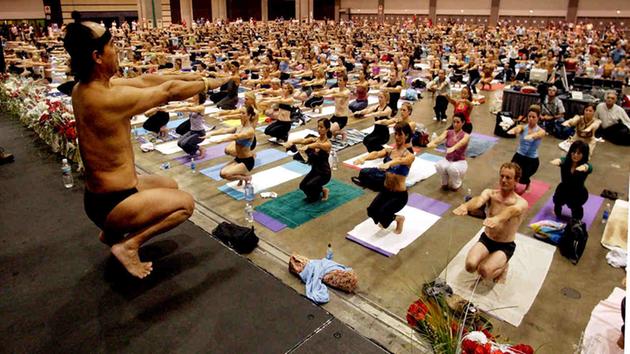s a big yoga fan, I was interested to discover the origins of Bikram yoga, or “hot yoga”, in a recent conversation with a friend from India.
The practice was established as recently as the late 20th century, which I found surprising. It consists of an unchanging sequence of 26 postures in a room heated to 40°C (104°F), in order to mimic the climate of India.
Its founder, Bikram Choudhury, was born in Calcutta, India, in 1946. He began learning Hatha Yoga – that is, the physical exercises known as asanas or postures – at the age of three. He created the popular Bikram yoga approach from traditional techniques, and insists that all classes run for 90 minutes with exactly the same postures.
Many studies looking at the health effects of Bikram yoga have been published. However, to date, any positive effects have not been confirmed in large-scale, properly-designed randomised controlled trials.
There have been widespread claims of high energy expenditure, up to 1,000 calories per session. But no scientific study has reliably investigated the metabolic response to a Bikram yoga class.
What’s more, excessive sweating caused by the hot and humid conditions of a Bikram yoga room can lead to dehydration or hyperthermia (overheating).
All things considered, I think I’ll stick to my usual yoga workout which has the relaxing advantage of taking place in comfortable conditions!









